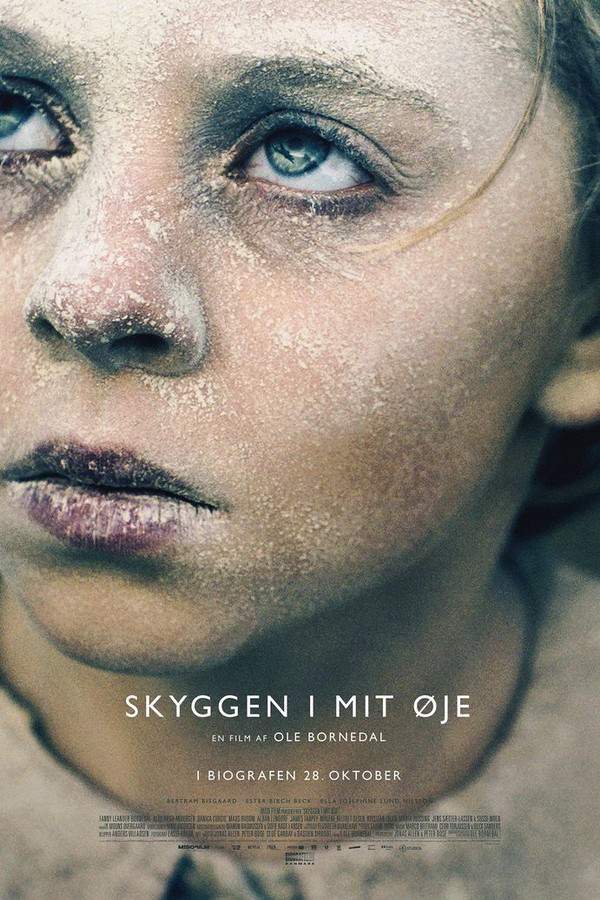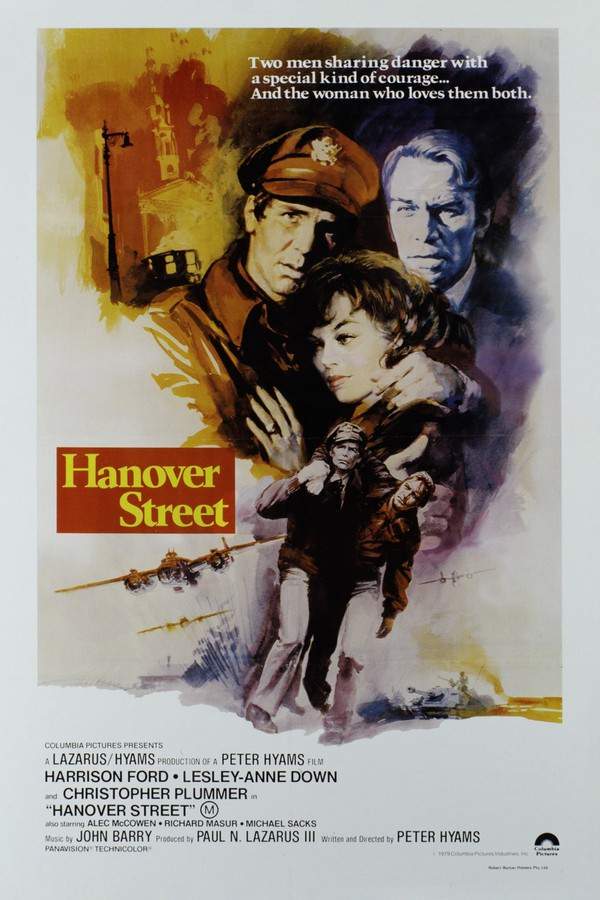
The Bombardment 2022
Directed by

Ole Bornedal
Made by

Netflix
Test your knowledge of The Bombardment with our quiz!
The Bombardment Plot Summary
Read the complete plot summary and ending explained for The Bombardment (2022). From turning points to emotional moments, uncover what really happened and why it matters.
The Danish Resistance Movement continuously urged the British Forces to target the Gestapo headquarters located at the Shell House in Copenhagen. The Gestapo kept resistance members on the top floor, utilizing them as human shields in case of an air raid.
In February 1945, Henry (Bertram Bisgaard Enevoldsen) was cycling through the verdant meadows of Jutland when he heard a violent explosion. Driven by curiosity, he discovered a vehicle engulfed in flames, and to his horror, the occupants inside were still alive. This traumatic event marked a turning point for Henry, instilling in him a phobia of open spaces and rendering him mute. Seeking help, his mother (Maria Rossing) took him to a doctor who had an unconventional approach, often referring to him as a “sissy” in a misguided effort to break through Henry’s silence.
Subsequently, Henry’s mother brought him to Copenhagen to stay with her sister, Rigmor’s Mother (Danica Curcic). During this time, he met his cousin, Rigmor (Ester Birch), whose vibrant chatter and resilient spirit contrasted sharply with Henry’s newfound silence. Accompanying them was another girl named Eva (Ella Josephine Lund Nilsson), both curious about the reason behind Henry’s quietness and his gaze toward the sky. Rigmor, ever the optimist, pointedly remarked that even Eva had witnessed death yet could still speak, insisting that Henry would eventually find his voice again.
Meanwhile, inside the Shell House, resistance members like Svend Nielsen (Casper Kjær Jensen) faced dire circumstances. For Henry, the act of walking beneath open skies became a daunting challenge until Rigmor devised a clever solution, using a rope from her home to guide him, thereby restoring some of his confidence.
As the story unfolds, Sister Teresa (Fanny Bornedal), a staunch believer grappling with her faith, encounters Frederik (Alex Høgh Andersen), a conflicted Gestapo officer. Their interactions spark a forbidden romance, filled with tension and complexity. One fateful day, Eva’s father reprimands her for skipping breakfast, pushing her into a day that would soon take a dark turn.
On the same day of the British air raid aimed at the Gestapo headquarters, the planes mistakenly bombed the school where Henry, Eva, and Rigmor attended. While Eva felt faint from hunger, she and Henry sought relief in the restroom. In a moment of bravery, Frederik, having left the forces, returned to assist when he witnessed the devastation.
As chaos ensued, Rigmor and Sister Teresa became trapped under the rubble, with water rapidly rising around them. In a heroic attempt, Frederik endeavored to rescue Teresa, but as the weight above her was lifted, she leapt into the water to save Rigmor, tragically leading to their demise. Henry and Eva, however, managed to survive the ordeal.
In the aftermath, Henry was tasked with writing down the names and details of survivors, which he hurried to deliver at the designated theatre where anxious parents gathered for news. As he helped the rescuers, he assured Eva’s worried mother that her daughter had returned home, blissfully unaware that Eva was back inside, eating the very cold porridge that had caused her father’s earlier scolding.
Through a tapestry of bravery, innocence, and the heavy burden of trauma, the story beautifully captures the resilience of childhood and the powerful bonds that help heal even the deepest scars.
The Bombardment Timeline
Follow the complete movie timeline of The Bombardment (2022) with every major event in chronological order. Great for understanding complex plots and story progression.
Danish Resistance's Urging
The Danish Resistance Movement persistently pressured the British Forces to target the Gestapo headquarters. This was largely due to the Gestapo's notorious practice of using resistance members as human shields on the top floor, making them invaluable targets in the struggle against oppression.
Henry's Traumatic Discovery
In February 1945, Henry cycled through the meadows of Jutland when he encountered a horrific scene—a vehicle on fire with its occupants trapped inside. This traumatic discovery left Henry deeply shaken, instilling in him a profound phobia of open spaces and rendering him mute.
Seeking Help
After Henry's trauma, his mother sought help from a doctor in Copenhagen. Unfortunately, the doctor’s misguided approach involved calling Henry a 'sissy' in an attempt to draw him out of his silence, proving to be unproductive and adding to his distress.
Arrival in Copenhagen
Henry and his mother moved to Copenhagen to stay with her sister, Rigmor's Mother. This relocation marked a new chapter in Henry's life as he encountered his lively cousin Rigmor, whose cheerful spirit stood in stark contrast to his silence.
Bonding with Rigmor and Eva
While in Copenhagen, Henry met Rigmor and Eva, who both exhibited curiosity about his silence. Rigmor, ever the optimist, believed that Henry would eventually regain his voice, commenting on Eva's ability to speak despite having witnessed death.
Obstacles Beneath Open Skies
Henry faced significant challenges when it came to walking under open skies due to his trauma. In response, Rigmor devised a clever strategy using a rope to guide him, which helped restore some of his confidence and allowed him to venture outdoors.
Sister Teresa's Internal Conflict
Sister Teresa, a deeply conflicted figure, grappled with her faith while forming a bond with Frederik, a gestapo officer. Their complicated relationship unfolded amidst the backdrop of war, presented as a forbidden romance laden with tension and emotional turmoil.
Day of Tragedy
One fateful day, as Eva's father reprimanded her for missing breakfast, events were set in motion that would lead to chaos. This day would soon take a dark turn as British forces mistakenly targeted not just the Gestapo headquarters, but also the school where Henry, Eva, and Rigmor attended.
The Bombing Incident
During the British air raid, the school was bombed, leading to panic and devastation. While feeling faint from hunger, Eva and Henry sought refuge in the restroom, unaware of the tragedy unfolding just outside their door.
Frederik's Heroic Return
Amidst the chaos, Frederik abandoned his post and returned to the scene to help the trapped individuals. His actions displayed a significant turning point in his character, as he witnessed the horror of the bombing and felt compelled to assist.
Trapped Under Rubble
As confusion reigned, Rigmor and Sister Teresa found themselves trapped under the rubble with water quickly rising around them. In a desperate effort to save Rigmor, Teresa made a courageous leap into the water, although this decision ultimately led to their tragic demise.
Survival and Aftermath
Despite the tragic events, Henry and Eva managed to survive the devastating bombing. In the aftermath, Henry had the important task of documenting the names and details of the survivors, providing a semblance of hope amidst the despair.
Delivering Bad News
Henry hurried to deliver the news of survivors to a designated theatre where anxious parents gathered. In a moment of kindness, he reassured Eva's worried mother that her daughter had returned home, all while blissfully unaware that Eva was inside indulging in cold porridge.
Themes of Resilience
The movie beautifully intertwines themes of bravery, childhood innocence, and the heavy burden of trauma. It highlights the resilience of young characters and the powerful bonds formed during times of adversity, creating a poignant narrative.
The Bombardment Characters
Explore all characters from The Bombardment (2022). Get detailed profiles with their roles, arcs, and key relationships explained.
Henry
Henry, portrayed by Bertram Bisgaard Enevoldsen, is a young boy deeply affected by trauma after witnessing an explosion. This experience engenders a phobia of open spaces and renders him mute for a time. Throughout the film, his character embodies the struggles of healing and regaining confidence with the aid of his supportive cousin, Rigmor.
Rigmor
Rigmor, played by Ester Birch, is a vibrant and optimistic cousin who contrasts with Henry's silence. Her resilient spirit and unwavering support help Henry confront his fears. Rigmor's character symbolizes hope and the healing power of companionship amidst the horrors of war.
Frederik
Frederik, portrayed by Alex Høgh Andersen, is a conflicted Gestapo officer who experiences a moral struggle throughout the film. His romance with Sister Teresa adds depth to his character, as he grapples with his role during the war. Frederik's actions during the air raid portray a complex mix of bravery and remorse, revealing the impact of war on personal identities.
Eva
Eva, played by Ella Josephine Lund Nilsson, is a curious and spirited girl who befriends Henry and Rigmor. Throughout the narrative, her innocence and bravery juxtapose the harsh realities of their situation. She represents the inherent curiosity of childhood, marred by the trauma surrounding them.
The Bombardment Settings
Learn where and when The Bombardment (2022) takes place. Explore the film’s settings, era, and how they shape the narrative.
Time period
February 1945
The film is set during a critical period of World War II in February 1945, when the war was nearing its end. This time was marked by desperation and turmoil, especially for countries under Nazi occupation. The Danish Resistance Movement was increasingly active, pushing for action against the Gestapo, highlighting the struggles and sacrifices made by civilians during this turbulent period.
Location
Copenhagen, Jutland, Shell House
Copenhagen, the capital of Denmark, serves as a significant backdrop for the story, particularly with its Shell House, which was the Gestapo headquarters during World War II. Known for its rich history and architecture, the city is filled with stories of resistance and courage. Jutland, a more rural area, represents the peaceful contrast to the chaos of the war, with its verdant meadows where Henry experiences a harrowing event that changes his life.
The Bombardment Themes
Discover the main themes in The Bombardment (2022). Analyze the deeper meanings, emotional layers, and social commentary behind the film.
🕊️
Hope and Resilience
The theme of hope and resilience is central to the story, as characters navigate their traumas and struggles during the war. Henry's journey from silence to recovery, bolstered by the love and support from Rigmor and Eva, embodies the strength to overcome adversity. The contrasting experiences of characters like Sister Teresa and Frederik showcase the human capacity for hope even in the face of danger and despair.
⚔️
War and Innocence
The juxtaposition of war with childhood innocence unfolds throughout the film as children like Henry, Eva, and Rigmor face the unbearable realities of conflict. Their lives are jolted by sudden violence, and they navigate the complexities of fear, bravery, and loss. This theme highlights the profound impact of war on the younger generation, capturing how innocence is both shattered and resilient.

Coming soon on iOS and Android
The Plot Explained Mobile App
From blockbusters to hidden gems — dive into movie stories anytime, anywhere. Save your favorites, discover plots faster, and never miss a twist again.
Sign up to be the first to know when we launch. Your email stays private — always.
The Bombardment Ending Explained
Unravel the ending of The Bombardment (2022) with our detailed explanation. Understand the final scenes, character fates, and unresolved questions.
The ending of “The Bombardment” leaves a powerful, haunting image that encapsulates the story’s tragic core. After the chaos and destruction caused by the accidental bombing of the civilian school, the film shows Eva peacefully eating her porridge, seemingly unaware of the widespread suffering around her. This scene is deeply symbolic—it highlights the innocence and naive hope that can persist even in the darkest times. Eva’s act of calmly eating her breakfast suggests that she might believe her survival depends on the simple act of finishing her food, or perhaps she remains unbothered by the horrors she has witnessed, clinging to a child’s natural instinct for normalcy. Her innocence starkly contrasts with the brutal loss of life caused by the bombing, including her friends Teresa and Rigmor, who perished in the rubble trying to save others.
The film poses a heartbreaking question: what might Eva be thinking at this moment? Does she truly comprehend the scale of the tragedy, or is her innocence shielding her from the grim reality? The final image invites viewers to reflect on how war devastates not only physically but also psychologically, especially for those too young to understand its full meaning. In the end, the scene underscores the terrible cost of conflict—how it snatches away childhood, replaces hope with loss, and leaves behind memories that haunt even the simplest acts of everyday life. The visual of Eva eating her porridge, untouched by the chaos, is a poignant reminder that innocence can survive the worst, but often at the expense of understanding the full weight of what has happened. It’s a stark, emotional reminder that war spares no one, not even the brightest, most innocent souls.
The Bombardment Spoiler-Free Summary
Discover the spoiler-free summary of The Bombardment (2022). Get a concise overview without any spoilers.
In the waning months of World War II, Copenhagen lives under a fragile veneer of normalcy while the war’s machinery rattles above it. The city’s streets echo with the distant hum of Allied aircraft and the ominous presence of the Gestapo, whose headquarters dominate the skyline. Against this backdrop, ordinary lives are threaded together by the quiet desperation of those who must survive both the external conflict and the internal scars it leaves behind. The film’s tone is simultaneously plaintive and hopeful, capturing the stark contrast between the cold steel of war and the warm, stubborn resilience of childhood.
At the heart of the story is Henry, a boy whose life is irrevocably altered after a harrowing encounter with a crash‑site fire. Rendered mute and haunted by an intense fear of open space, he is taken in by his aunt’s family in Copenhagen, where he meets his lively cousin Rigmor and the inquisitive girl Eva. Their bond forms a delicate tapestry of silent support, playful curiosity, and the unspoken yearning for safety. Rigmor’s optimism and resourcefulness often guide Henry through moments of overwhelming anxiety, while Eva brings a keen sense of wonder that challenges his self‑imposed isolation.
Interwoven with the children’s narrative are the conflicted lives of the adults. Sister Teresa, a nun wrestling with her faith amid the chaos, finds an unexpected connection with Frederik, a Gestapo officer whose loyalties are anything but certain. Their delicate, forbidden relationship hints at the complex moral terrain occupied by the city’s residents, where duty and desire clash beneath the ever‑present threat of violence. Together, these characters paint a portrait of a community striving to retain its humanity, even as the distant thunder of war looms. The film invites viewers to linger on the quiet moments of courage, the whisper of hope, and the subtle ways in which ordinary people navigate extraordinary circumstances.
Can’t find your movie? Request a summary here.
Movies with Similar Twists and Themes
Uncover films that echo the narrative beats, emotional arcs, or dramatic twists of the one you're exploring. These recommendations are handpicked based on story depth, thematic resonance, and spoiler-worthy moments — perfect for fans who crave more of the same intrigue.
Featured on this page

What's After the Movie?
Not sure whether to stay after the credits? Find out!
Explore Our Movie Platform
New Movie Releases (2025)
Famous Movie Actors
Top Film Production Studios
Movie Plot Summaries & Endings
Major Movie Awards & Winners
Best Concert Films & Music Documentaries
Movie Collections and Curated Lists
© 2025 What's After the Movie. All rights reserved.












